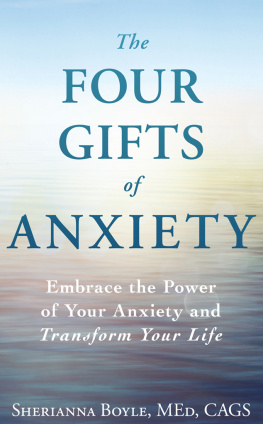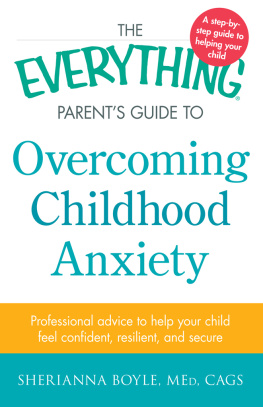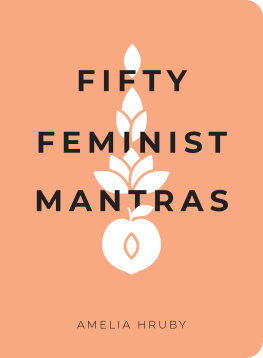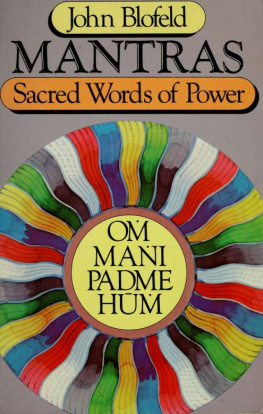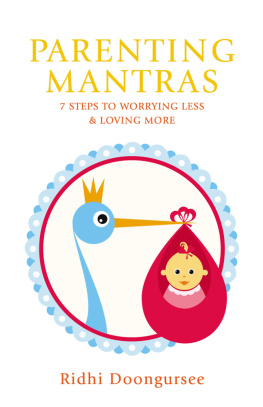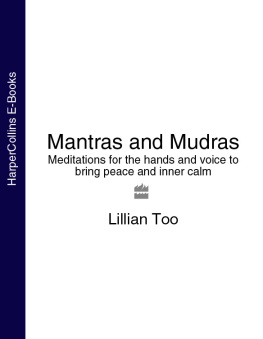All rights reserved.
This book, or parts thereof, may not be reproduced in any form without permission from the publisher; exceptions are made for brief excerpts used in published reviews.
Adams Media, an imprint of Simon & Schuster, Inc.
57 Littlefield Street, Avon, MA 02322. U.S.A.
Cover design by Colleen Cunningham.
Cover image Marina Kleper/123RF.
Deep inside your heart is a sacred altar. Go there now and I will meet you. Together we will recite these words, sounds, and phrases in the name of love.
This book is dedicated to the great Thomas Ashley-Farrand, who brought many of these sacred mantras to the West, and to all my spiritual teachersthose whom I have met, as well as those whom I have not. You know who you are. Thank you. To Karen Cooper and Laura Daly for your unconditional support and belief in this project. To my daughters, Megan, Mikayla, and Makenzie, I pass the gift of mantras to you with much love. To my mother, for showing up to my yoga classes, and to my dear dad. Finally, this is for youyou the reader, you the soul. Know that these offerings go beyond me. Your interest in this book is no accident and neither is our connection.
Introduction
A mantra truly is a vehicle that takes you into quieter, more peaceful levels of the mind.
Deepak Chopra
Mantras are words, syllables, or phrases you repeat to help you connect and feel the energy within you and around you. Mantras can provide you with all kinds of support when you need it mostcomfort, inspiration, reassurance, motivation, a sense of calm, or a burst of energyand they can be practiced anytime, anywhere. The words in mantras are carefully formulated to offer you a way to be present and move through a particular situation. Incorporating mantras into your daily life will help you be more focused and centered, and better able to transform perceived obstacles into doorways of opportunity.
I realized this firsthand when I received a letter from my credit card company. The message informed me that personal information had been stolen by an intruder who had hacked into the computer of a company that I was ordering products from. Rather than saying, Youve gotta be kidding me! or Ugh! Such a hassle!, my mind immediately thought, All is well. My daily mantra practice interceded in what could have been a very stressful moment and offered me just the words I needed to think. Although I was sure to follow the necessary logistical precautions about my identity and finances, the mantra gave me the means to access a sense of calm, clarity, and resilience.
In the past, I might have panicked, analyzed the what ifs, felt sorry for myself, or held my breath through the process. This is no longer the case. The practice of mantras not only loosens the grip of old, ineffective habits but also generously clears away what contributes to them in the first place. As a result, you free yourself of defensive coping mechanisms that previously zapped your energy, and instead you activate more liberating states of being. When this occurs, your life tends to run more smoothly, filling you with easeless like a yo-yo (or in some cases a freight train).
When practiced and applied effectively, mantras also give you the power to positively influence others through the personal transformation of yourself. Mantras Made Easy is a collection of mantras for all the ups and downs of daily living. Think of it as a trusted friend, offering you just what you need to get through the particular situation youre experiencing. Youll find mantras to bring you happiness, peace, love, and healing, and mantras to help you overcome fear and anxiety. In addition to the mantras, youll also find specific insight into why these specific words will help in the given situation.
Leave frustration, anger, and fear behind. Embrace the peace, inspiration, and happiness that mantras can provide.
Chapter 1
The Power of a Mantra
We dont necessarily see things as they are. We see them as we are.
Ram Dass with Rameshwar Das, Polishing the Mirror
According to German authors Grazyna Fosar and Franz Bludorf, your body is programmable by language, words, and thoughts. Just like you are programmed to respond to the ring of your phone, you can program repeated words and phrases into your subconscious mind. If you repeat negative words and phrases, you begin to develop beliefs (e.g., Im fat) and behaviors (feeling guilty and irritable) that do not serve you well.
If thats the case for you, take heart. These tendencies are actually a reflection of our evolution. In order to survive, our ancestors were wired to focus on the negative, as this increased their chances of survival. They had to be on the lookout for predators and constantly be aware of threats to their food and water sources. Today, of course, we dont need to watch out for lions or remember how to get to a watering hole. But this information about how our brains work provides insight into why mantras are so powerful. Although focusing on the negative helped our ancestors survive, focusing on the positive through mantras is much more beneficial for the modern you.
The History of Mantras
Mantras are one of the most ancient mind-body practices. Although mantras have been around for 3,000-plus years, they were not fully discovered until the last 150 years. This is because a good portion of mantras were written in the ancient Hindu language of Sanskrit and kept private to preserve their quality. Although Sanskrit is not spoken today, it is very much kept alive through the practice of mantras.
Mantras in the Bible
Mantras are also found throughout the Bible. Syllables and words taken from prayers can easily be put into practice within a mantra. For example, the word amen, which was originally a Hebrew (Aramaic) term and made its way into Greek, Latin, and then finally English, is translated as and so be it. Moreover, Bible passages such as In the beginning was the Word, and the Word was with God, and the Word was God (John 1:1) show just how important words are to the practice of faith.
Sanskrit Mantras
Thomas Ashley-Farrand, one of the western experts on sacred Sanskrit mantras, reports that mantras were originally recorded on palm leaves. Certain families were asked to safeguard specific mantras, similar to a family heirloom or a secret recipe. Mantras in India and Tibet were secured through precise recording, storing, and passing from generation to generation. All of this information was eventually transferred and formally recorded in one of the oldest Hindu texts (still widely utilized today) called the Veda.
Sanskrit mantras were designed as a tool for healing and spiritual growth. They were used to increase abundance, prosperity, strength, protection, fortitude, and love. For example, one might commit to a mantra to increase the abundance of crops, ward off diseases, and/or attract good luck.
Thousands of mantras have been recorded throughout history and many are being created in our own native language today. What makes the Sanskrit ones so special is the amazing foundation they have been built upon. You can think of Sanskrit mantras as being similar to an eternal flame. When you recite a Sanskrit mantra, you are not only tapping into the energy of the words but also the level of consciousness that was put into the words by those who repeated it before you. Since this level of consciousness goes back thousands of years, you can imagine how strong this word energy is.


